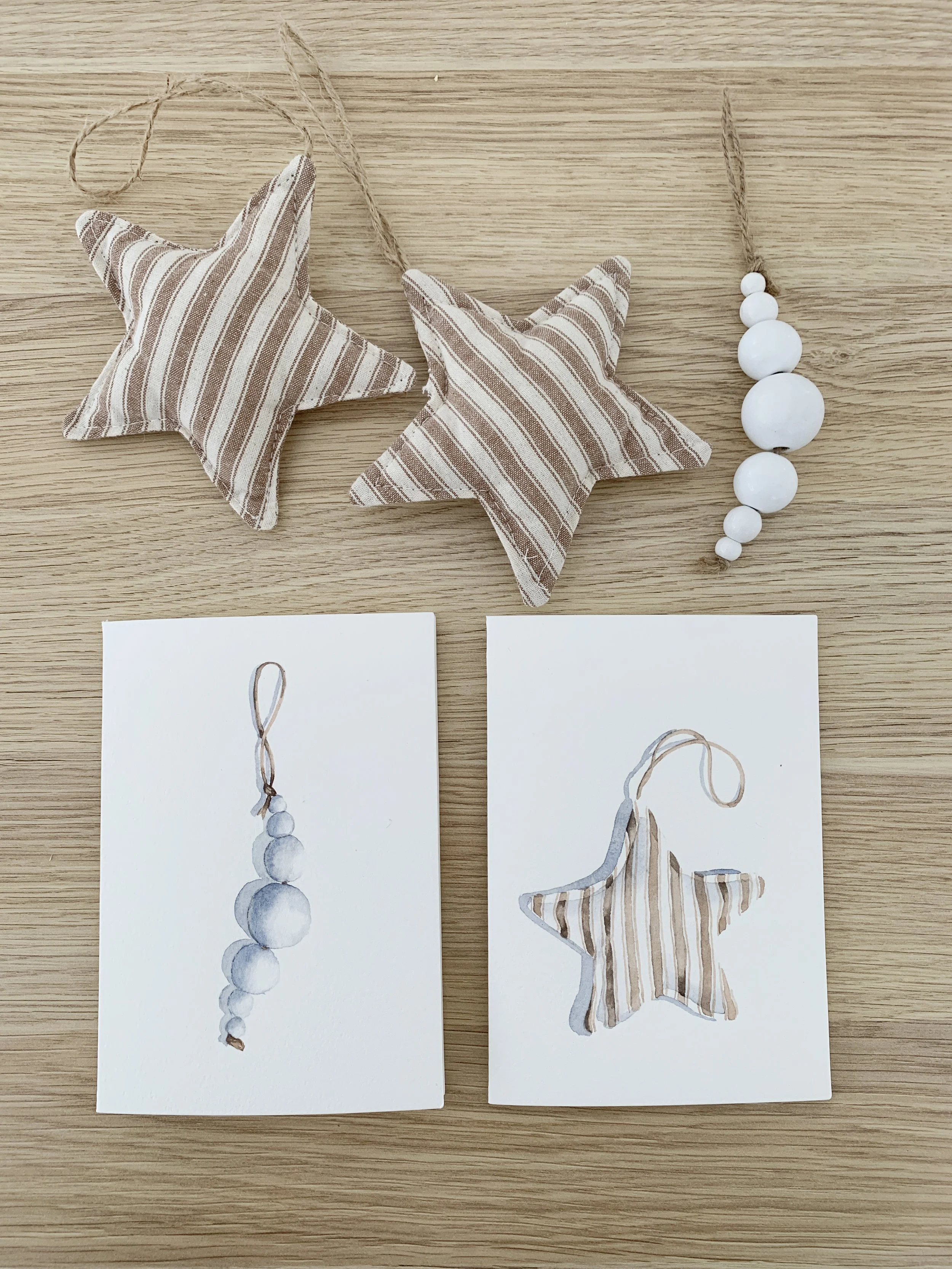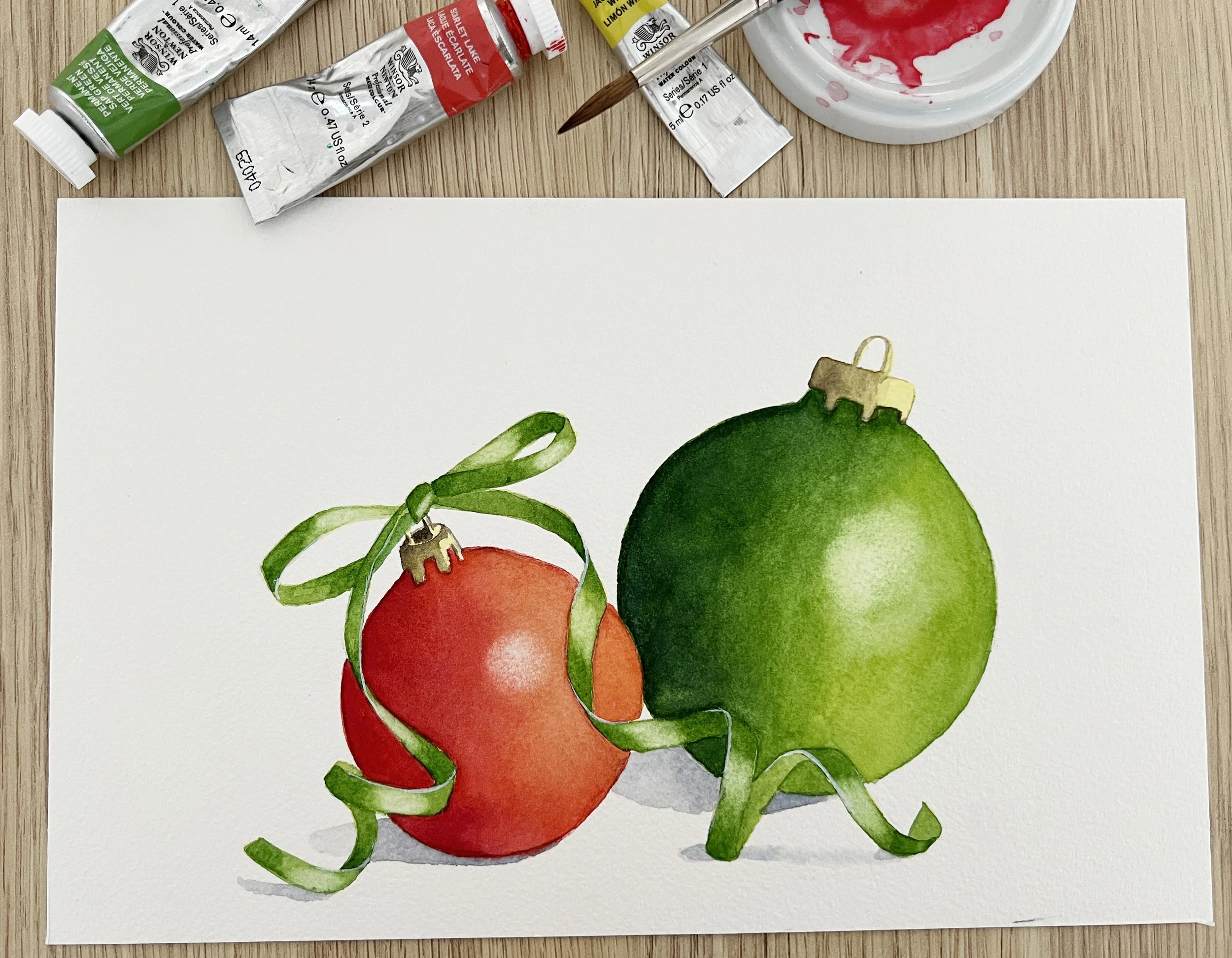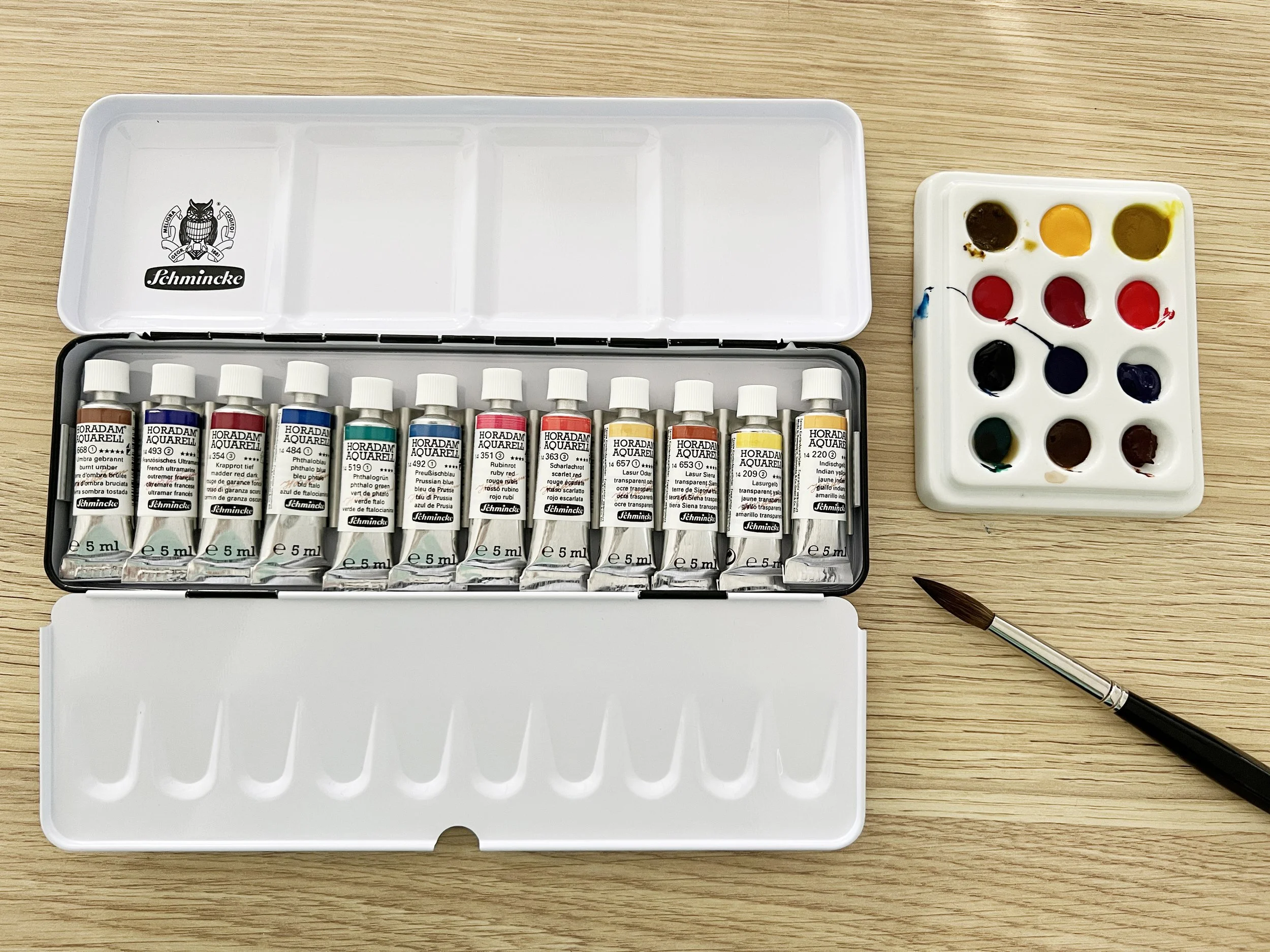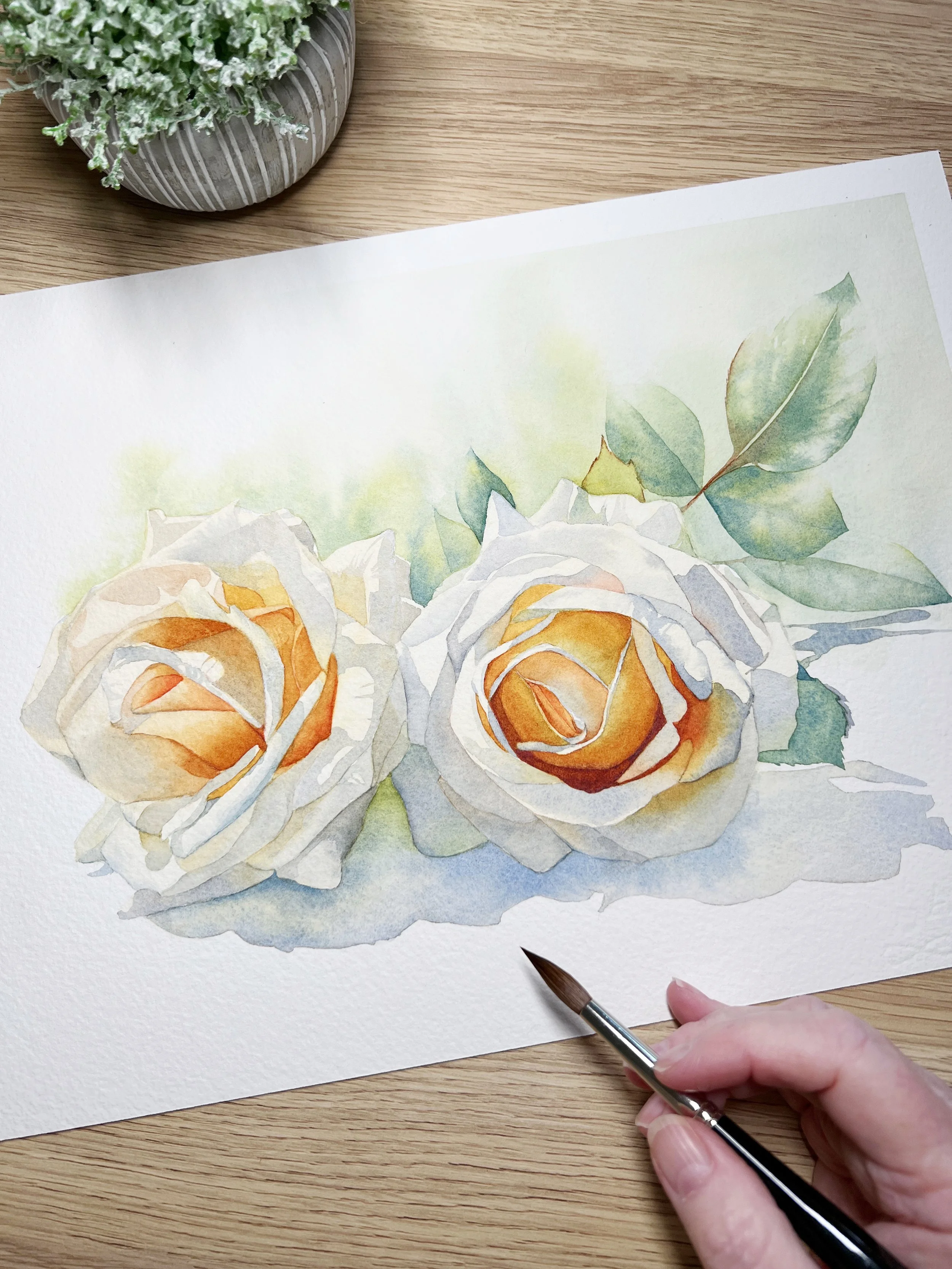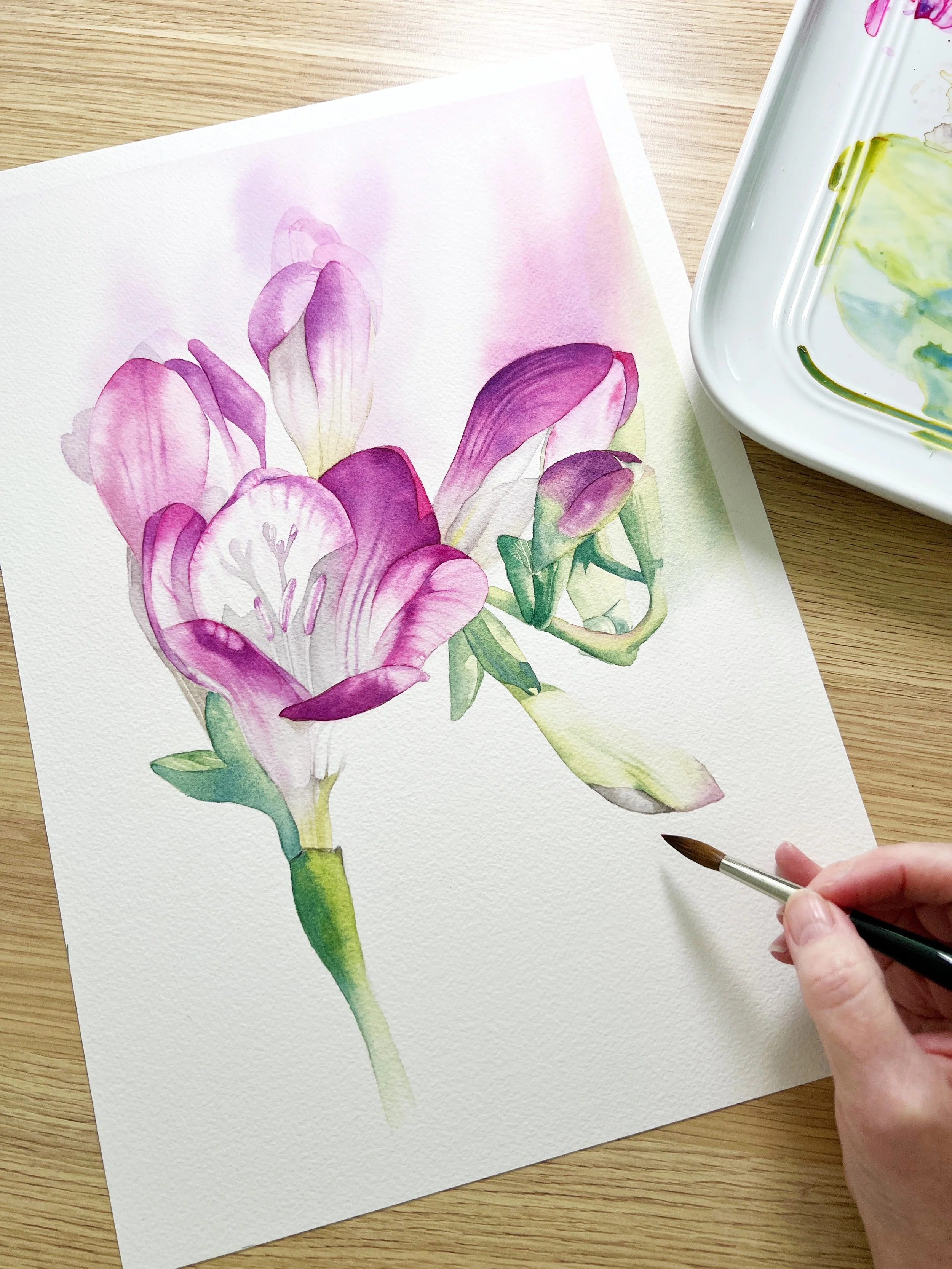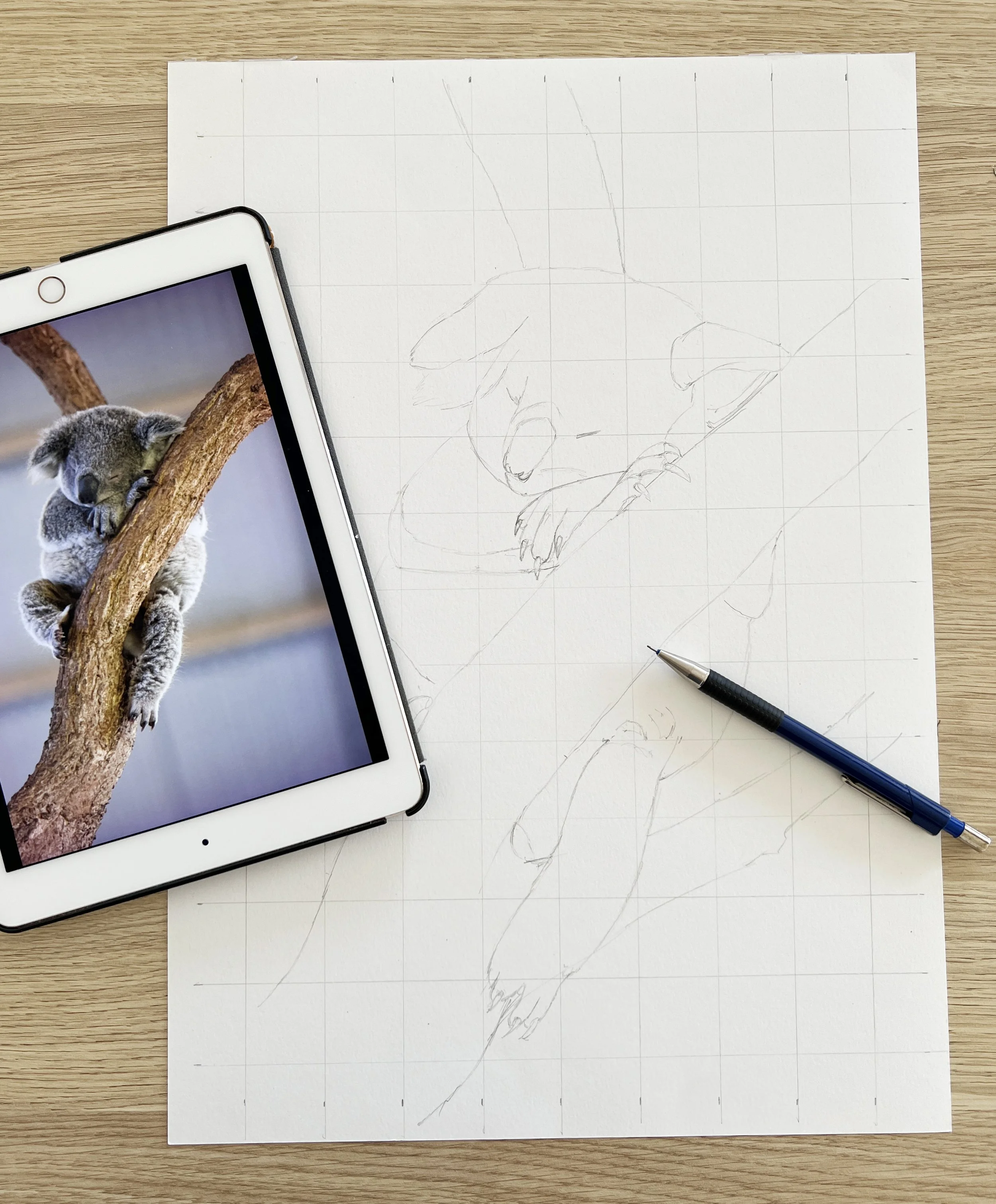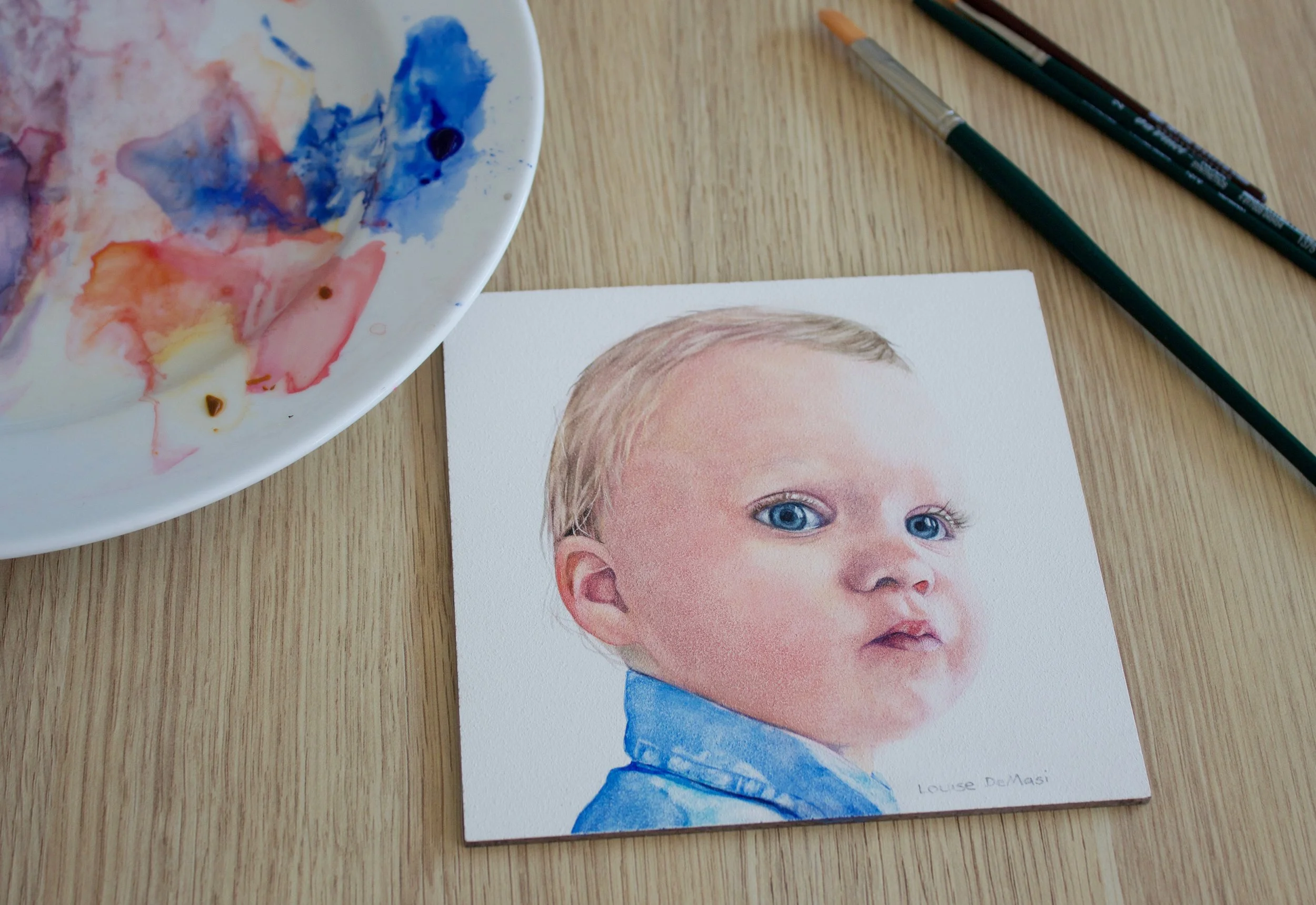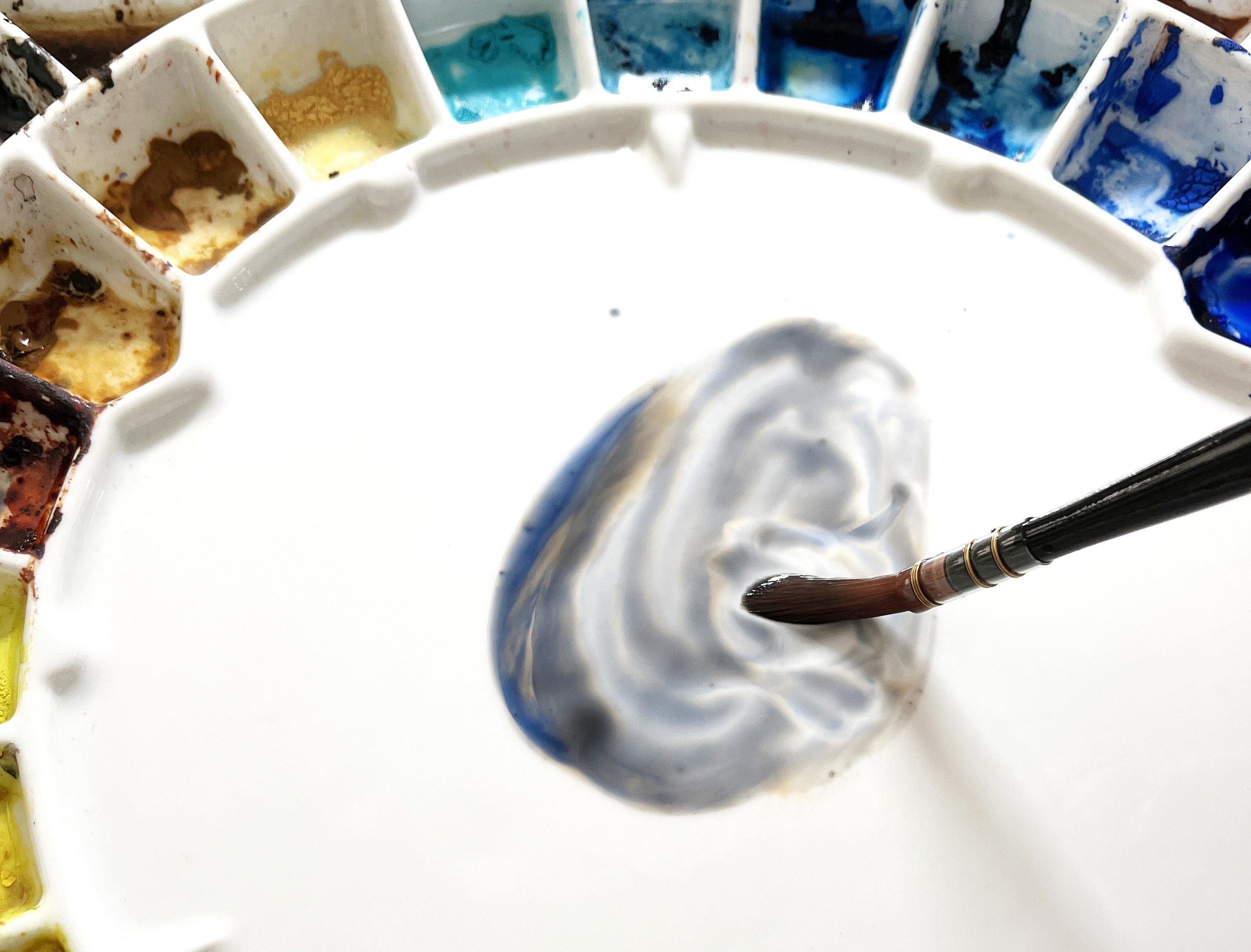As the holiday season approaches, I love going back to small, calming projects. The ones that need only a few materials but still leave you with something beautiful and personal to give away, like your own watercolour Christmas cards. Even if you are short on time right up until Christmas, these cards are so quick to paint that you can make them as a last minute DIY present.
Read MoreBefore you start painting on an Aquabord panel it's important to wet the surface with some water to release any trapped air bubbles. I use a large flat brush and paint clean water onto the surface. I let it dry naturally and then I transferred my line drawing onto the panel using some saral transfer paper.
Read MoreAt first, I thought I’d leave the water droplets out. But as the painting progressed, I decided to add them in, and I’m so glad I did. They gave the flower sparkle, depth, and a feeling of freshness, as though it had just been kissed by the morning dew. I always look for new and exciting watercolour painting ideas.
Read MoreThese days I almost always mix my own violets because it helps me stick to a limited palette, which naturally creates better colour harmony across the whole painting. I also paint wet on wet a lot, and there's something beautiful about watching the pigments separate on the paper when you mix violet yourself - especially with granulating colours like Ultramarine.
Read MoreThere’s something so beautiful about the hydrangea flower - the full, delicate blooms, the shifting colours, and the way they fill a space with softness. I have a few hydrangea bushes growing in my garden, and when they’re in bloom, I always feel inspired to bring them indoors and start painting. This watercolour hydrangea piece came together after I popped a few freshly cut stems into a glass vase and decided it was the perfect moment for painting flowers.
Read MoreWith patience and practice, these baubles can become stunning centrepieces for your holiday cards.
Creating your own watercolour Christmas cards is a joyful way to celebrate the season and share your creativity with loved ones. Whether you paint a single bauble or an entire festive arrangement, your handmade card is sure to bring a smile to anyone who receives it.
Read MoreYou’ve probably heard of the rule of thirds - it’s a common compositional guideline that divides your canvas into a grid of nine equal parts, with two horizontal and two vertical lines. You might’ve noticed this grid when using the camera on your phone. The idea is to place your key elements along these lines or at their intersections to create a more balanced, engaging composition.
Read MoreDifferent types of salt can produce different results. Coarse sea salt, with its larger crystals, tends to create bold, dramatic textures, while table salt results in smaller, more delicate starbursts.
It’s fun experimenting with both to see what kinds of patterns they produce on your watercolour paper.
Read MoreColour mixing is essential for any artist because it offers flexibility, enabling you to achieve unique tones and adjust the vibrancy or mood of your work. Whether you're painting landscapes, portraits, or still lifes, the ability to create custom shades gives you more control over your composition and allows for a greater level of depth and harmony in your artwork. It also teaches you how colours interact, deepening your understanding of pigments and how they behave on paper.
Read MoreSealing a watercolour painting can be an excellent way to protect it from environmental factors, especially if you plan to display it without glass. When a painting isn’t framed behind glass, it is more vulnerable to moisture, smudging, and dirt.
Applying a protective sealer or workable fixative creates a barrier over the surface, adding extra durability to your artwork. For those who like to give their pieces a modern, glass-free look, sealing is essential.
Read MoreThe choice of watercolour brush can significantly influence the outcome of your washes. A larger mop brush is ideal for laying down a flat wash, as it holds a considerable amount of water and paint, allowing for smooth, even coverage. When applying a graded wash, a smaller round brush can give you more control as you gradually change the intensity of the colour.
Read MoreDraw the Grid: Connect the marks with straight lines, running both horizontally and vertically across the entire surface of your sketch. Be sure to keep your lines light; you want them to be visible but not overpowering. If you’re concerned about the lines showing through, use a lightbox or tape your paper to a window to keep the lines faint.
Some artists also use diagonal lines to help maintain proportional accuracy when transferring more complex images.
Read MoreOne of the most exciting parts of starting a new watercolour piece is getting your sketch ready on the paper. But transferring that sketch, aka tracing a drawing, can be a bit tricky, especially when you want to preserve the delicacy of your watercolour paper.
There are several methods to do this, and today, we’ll explore some popular techniques, discuss which pencils work best, and answer the age-old question: is it “cheating”?
Read MoreWhen working on Aquabord panels, just like with watercolour paper, it's important to wait until the paint is completely dry before adding more layers, or things can get messy. Washes on Aquabord often dry patchy, but I’ve learned not to worry too much about that since they can be smoothed out with a damp brush once fully dry.
Read MoreMany beginners fall into the trap of overthinking their paintings. Instead of letting go of the outcome and allowing themselves to be creative and have fun, they become tense and try to analyse every detail. This overuse of the left analytical brain can stifle creativity, overshadowing the intuitive and spontaneous process that is essential in watercolour painting. Finding a balance between analytical thinking and creative expression is key to enjoying the artistic journey and achieving satisfying results.
Read MoreUnderstanding the temperature of the colour grey is crucial in painting as it directly influences the mood, atmosphere, and overall aesthetic of the artwork.
The temperature of greys can evoke specific emotions and set the tone of the painting. Warm greys, with hints of red, orange, or yellow, often create a sense of warmth, intimacy, and comfort. They can be used to convey feelings of coziness or nostalgia, making them ideal for depicting sunny interiors, cozy firesides, or intimate gatherings.
Read MoreAquabord is a unique painting surface created by Ampersand Art Supply, designed specifically for watercolour and other water-based media. Aquabord is available in various options, including flat panels and cradle profiles. The texture of Aquabord is similar to cold-pressed watercolour paper, allowing colours to retain their purity and vibrancy. Unlike traditional watercolour paper, Aquabord is made from a rigid, absorbent clay surface that is applied to a hardboard panel.
Read MoreWhen your paint no longer offers the sheen of freshness, it's time to step back and let the canvas breathe. Embrace this moment of stillness, allowing the paint to dry completely before introducing more pigment. This necessitates a swifter approach to your strokes - often a leap for watercolour beginners, who tend to meticulously shape their washes, giving time for the edges to start setting.
Read More